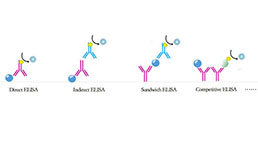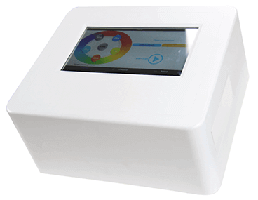Packages (Simulation)

Reagent Preparation

Image (I)
Image (II)
Certificate


- Featured-Product
ELISA Kit for Placenta Growth Factor (PLGF)
PlGF2; PGF; PGFL; Placental Growth Factor-Like; Vascular Endothelial Growth Factor-Related Protein
- Product No.SEA114Mu
- Organism SpeciesMus musculus (Mouse) Same name, Different species.
- Sample TypeSerum, plasma, tissue homogenates and other biological fluids
- Test MethodDouble-antibody Sandwich
- Assay Length3h
- Detection Range31.2-500pg/mL
- SensitivityThe minimum detectable dose of this kit is typically less than 11.7pg/mL.
- DownloadInstruction Manual
- UOM 48T96T 96T*5 96T*10 96T*100
- FOB
US$ 349
US$ 498
US$ 2241
US$ 4233
US$ 34860
For more details, please contact local distributors!
Specificity
This assay has high sensitivity and excellent specificity for detection of Placenta Growth Factor (PLGF).
No significant cross-reactivity or interference between Placenta Growth Factor (PLGF) and analogues was observed.
Recovery
Matrices listed below were spiked with certain level of recombinant Placenta Growth Factor (PLGF) and the recovery rates were calculated by comparing the measured value to the expected amount of Placenta Growth Factor (PLGF) in samples.
| Matrix | Recovery range (%) | Average(%) |
| serum(n=5) | 98-105 | 102 |
| EDTA plasma(n=5) | 92-99 | 95 |
| heparin plasma(n=5) | 98-105 | 102 |
Precision
Intra-assay Precision (Precision within an assay): 3 samples with low, middle and high level Placenta Growth Factor (PLGF) were tested 20 times on one plate, respectively.
Inter-assay Precision (Precision between assays): 3 samples with low, middle and high level Placenta Growth Factor (PLGF) were tested on 3 different plates, 8 replicates in each plate.
CV(%) = SD/meanX100
Intra-Assay: CV<10%
Inter-Assay: CV<12%
Linearity
The linearity of the kit was assayed by testing samples spiked with appropriate concentration of Placenta Growth Factor (PLGF) and their serial dilutions. The results were demonstrated by the percentage of calculated concentration to the expected.
| Sample | 1:2 | 1:4 | 1:8 | 1:16 |
| serum(n=5) | 87-102% | 82-92% | 98-105% | 79-103% |
| EDTA plasma(n=5) | 92-101% | 78-96% | 78-97% | 84-96% |
| heparin plasma(n=5) | 81-94% | 93-101% | 85-97% | 90-104% |
Stability
The stability of kit is determined by the loss rate of activity. The loss rate of this kit is less than 5% within the expiration date under appropriate storage condition.
To minimize extra influence on the performance, operation procedures and lab conditions, especially room temperature, air humidity, incubator temperature should be strictly controlled. It is also strongly suggested that the whole assay is performed by the same operator from the beginning to the end.
Reagents and materials provided
| Reagents | Quantity | Reagents | Quantity |
| Pre-coated, ready to use 96-well strip plate | 1 | Plate sealer for 96 wells | 4 |
| Standard | 2 | Standard Diluent | 1×20mL |
| Detection Reagent A | 1×120µL | Assay Diluent A | 1×12mL |
| Detection Reagent B | 1×120µL | Assay Diluent B | 1×12mL |
| TMB Substrate | 1×9mL | Stop Solution | 1×6mL |
| Wash Buffer (30 × concentrate) | 1×20mL | Instruction manual | 1 |
Assay procedure summary
1. Prepare all reagents, samples and standards;
2. Add 100µL standard or sample to each well. Incubate 1 hours at 37°C;
3. Aspirate and add 100µL prepared Detection Reagent A. Incubate 1 hour at 37°C;
4. Aspirate and wash 3 times;
5. Add 100µL prepared Detection Reagent B. Incubate 30 minutes at 37°C;
6. Aspirate and wash 5 times;
7. Add 90µL Substrate Solution. Incubate 10-20 minutes at 37°C;
8. Add 50µL Stop Solution. Read at 450nm immediately.
GIVEAWAYS
INCREMENT SERVICES
-
 Single-component Reagents of Assay Kit
Single-component Reagents of Assay Kit
-
 Lysis Buffer Specific for ELISA / CLIA
Lysis Buffer Specific for ELISA / CLIA
-
 Quality Control of Kit
Quality Control of Kit
-
 ELISA Kit Customized Service
ELISA Kit Customized Service
-
 Disease Model Customized Service
Disease Model Customized Service
-
 Serums Customized Service
Serums Customized Service
-
 TGFB1 Activation Reagent
TGFB1 Activation Reagent
-
 Real Time PCR Experimental Service
Real Time PCR Experimental Service
-
 Streptavidin
Streptavidin
-
 Fast blue Protein Stain solution
Fast blue Protein Stain solution
-
 Single-component Reagents of FLIA Kit
Single-component Reagents of FLIA Kit
-
 Streptavidin-Agarose Beads
Streptavidin-Agarose Beads
| Magazine | Citations |
| Microvascular Research | Mutant hypoxia inducible factor-1α improves angiogenesis and tissue perfusion in ischemic rabbit skeletal muscle PubMed: 20937289 |
| Oncogene | Elevated PLGF contributes to small-cell lung cancer brain metastasis PubMed: 22797069 |
| ?eLife | Photoreceptor avascular privilege is shielded by soluble VEGF receptor-1 PubMed: PMC3687373 |
| International Journal of Nanomedicine | Sustained dual release of placental growth factor-2 and bone morphogenic protein-2 from heparin-based nanocomplexes for direct osteogenesis Pubmed:27042064 |
| The Journal of Maternal-Fetal & Neonatal Medicine | Serum angiogenic profile in abnormal placentation Pubmed:26863111 |
| Fertility and Sterility | Administration of atosiban in patients with endometriosis undergoing frozenâthawed embryo transfer: a prospective, randomized study Pubmed:27143518 |
| Basic & Clinical Pharmacology & Toxicology | Placental Growth Factor Triggers Epithelial-to-Mesenchymal Transition-like Changes in Rat Type II Alveolar Epithelial Cells: Activation of Nuclear Factor κB Signalling Pathway doi:10.1111 |
| Life Sci. | Placenta growth factor contributes to cell apoptosis and epithelial-to-mesenchymal transition in the hyperoxia-induced acute lung injury Pubmed:27211521 |
| Int Immunopharmacol | Knockdown of placental growth factor (PLGF) mitigates hyperoxia-induced acute lung injury in neonatal rats: Suppressive effects on NFκB signaling pathway Pubmed:27280587 |
| Journal of Maternal-Fetal & Neonatal Medicine | Relationship between elevated serum level of placental growth factor and status of gestational diabetes mellitus Pubmed: 30935303 |
| Children (Basel) | sFlt-1/PlGF Ratio in Prediction of Short-Term Neonatal Outcome of Small for Gestational Age Neonates 34438609 |
| Dose-Response: An International Journal | Puerarin Reduces Radiation-Induced Vascular Endothelial Cell Damage Via miR-34a/Placental Growth Factor Pubmed:35110976 |
| Catalog No. | Related products for research use of Mus musculus (Mouse) Organism species | Applications (RESEARCH USE ONLY!) |
| RPA114Mu01 | Recombinant Placenta Growth Factor (PLGF) | Positive Control; Immunogen; SDS-PAGE; WB. |
| RPA114Mu02 | Recombinant Placenta Growth Factor (PLGF) | Positive Control; Immunogen; SDS-PAGE; WB. |
| EPA114Mu61 | Eukaryotic Placenta Growth Factor (PLGF) | Positive Control; Immunogen; SDS-PAGE; WB. |
| PAA114Mu01 | Polyclonal Antibody to Placenta Growth Factor (PLGF) | WB |
| PAA114Mu02 | Polyclonal Antibody to Placenta Growth Factor (PLGF) | WB; IHC; ICC; IP. |
| LAA114Mu81 | FITC-Linked Polyclonal Antibody to Placenta Growth Factor (PLGF) | WB; IHC; ICC; IF. |
| LAA114Mu71 | Biotin-Linked Polyclonal Antibody to Placenta Growth Factor (PLGF) | WB; IHC; ICC. |
| SEA114Mu | ELISA Kit for Placenta Growth Factor (PLGF) | Enzyme-linked immunosorbent assay for Antigen Detection. |
| LMA114Mu | Multiplex Assay Kit for Placenta Growth Factor (PLGF) ,etc. by FLIA (Flow Luminescence Immunoassay) | FLIA Kit for Antigen Detection. |






